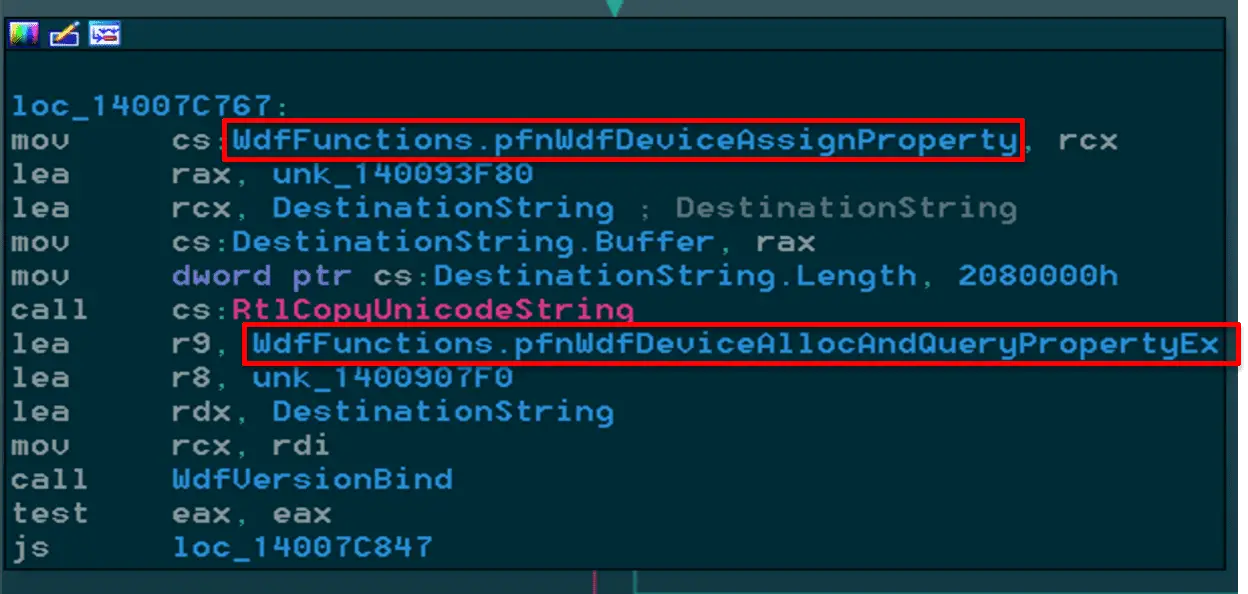DriverBuddy: IDA Python script to assist with the reverse engineering of Windows kernel drivers

DriverBuddy is an IDAPython plugin that helps automate some of the tedium surrounding the reverse engineering of Windows kernel drivers.

Image: NCCGROUP
Quickstart
DriverBuddy Installation Instructions
- Clone the repo: git clone https://github.com/nccgroup/DriverBuddy.git
- Copy DriverBuddy folder and DriverBuddy.py file into the IDA plugins folder C:\Program Files (x86)\IDA 6.8\plugins or wherever you installed IDA
DriverBuddy Usage Instructions
- Start IDA and open a Windows kernel driver
- Go to Edit->Plugins and select Driver Buddy or press ctrl-alt-d
- Check Output window for DriverBuddy analysis results
- To decode IOCTLs, highlight the suspected IOCTL and press ctrl-alt-i
DriverBuddy
DriverBuddy is an IDAPython plugin that helps automate some of the tedium surrounding the reverse engineering of Windows Kernel Drivers. It has a number of handy features, such as:
- Identifying the type of driver
- Locating DispatchDeviceControl and DispatchInternalDeviceControl functions
- Populating common structs for WDF and WDM drivers
- Attempts to identify and label structs like the IRP and IO_STACK_LOCATION
- Labels calls to WDF functions that would normally be unlabeled
- Finding known IOCTL codes and decoding them
- Flagging functions prone to misuse
Finding DispatchDeviceControl
Being able to automatically locate and identify the DispatchDeviceControl function is a time-saving task during driver reverse engineering. This function is used to route all incoming DeviceIoControl codes to the specific driver function associated with that code. Automatically identifying this function makes finding the valid DeviceIoControl codes for each driver much quicker. Additionally, when investigating possible vulnerabilities in a driver due to a crash, knowing the location of this function helps narrow the focus to the specific function call associated with the crashing DeviceIoControl code.
Labeling WDM Structs
Several driver structures are shared among all WDM drivers. Being able to automatically identify these structures, such as the IO_STACK_LOCATION, IRP, and DeviceObject structures can help save time during the reverse engineering process. DriverBuddy attempts to locate and identify many of these structs.
Labeling WDF Functions
As with WDM drivers, there are several functions and structures that are shared among all WDF drivers. Automatically identifying these functions and structures will save time during the reverse engineering process and provide context to unidentified areas of the driver where these functions are in use.
Decoding DeviceIoControl Codes
While reversing drivers, it is common to come across IOCTL codes as part of the analysis. These codes, when decoded, reveal useful information to reverse engineers and may draw focus to specific parts of the driver where vulnerabilities are more likely to exist.
Copyright (c) 2016 Adam Pond & Braden Hollembaek
Source: https://github.com/nccgroup/





